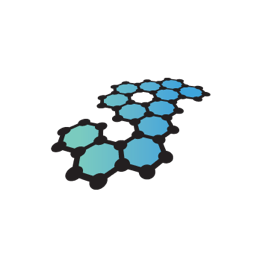Graphite vs Snowflake
A detailed comparison
Compare Graphite and Snowflake for time series and OLAP workloads
Learn About Time Series DatabasesChoosing the right database is a critical choice when building any software application. All databases have different strengths and weaknesses when it comes to performance, so deciding which database has the most benefits and the most minor downsides for your specific use case and data model is an important decision. Below you will find an overview of the key concepts, architecture, features, use cases, and pricing models of Graphite and Snowflake so you can quickly see how they compare against each other.
The primary purpose of this article is to compare how Graphite and Snowflake perform for workloads involving time series data, not for all possible use cases. Time series data typically presents a unique challenge in terms of database performance. This is due to the high volume of data being written and the query patterns to access that data. This article doesn’t intend to make the case for which database is better; it simply provides an overview of each database so you can make an informed decision.
Graphite vs Snowflake Breakdown
 |
 |
|
| Database Model | Time series database |
Cloud data warehouse |
| Architecture | Graphite can be deployed on-premises or in the cloud, and it supports horizontal scaling by partitioning data across multiple backend nodes. |
Snowflake can be deployed across multiple cloud providers, including AWS, Azure, and Google Cloud |
| License | Apache 2.0 |
Closed source |
| Use Cases | Monitoring, observability, IoT, real-time analytics, DevOps, application performance monitoring |
Big data analytics, Data warehousing, Data engineering, Data sharing, Machine learning |
| Scalability | Horizontally scalable, supports clustering and replication for high availability and performance |
Highly scalable with multi-cluster shared data architecture, automatic scaling, and performance isolation |
Graphite Overview
Graphite is an open-source monitoring and graphing tool created in 2006 by Orbitz and open sourced in 2008. Graphite is designed for storing time series data and is widely used for collecting, storing, and visualizing metrics from various sources, such as application performance, system monitoring, and business analytics.
Snowflake Overview
Snowflake is a cloud-based data warehousing platform that was founded in 2012 and officially launched in 2014. It is designed to enable organizations to efficiently store, process, and analyze large volumes of structured and semi-structured data. Snowflake’s unique architecture separates storage, compute, and cloud services, allowing users to independently scale and optimize each component.
Graphite for Time Series Data
Graphite is specifically designed and optimized for time series data. It uses the Whisper database format, which efficiently stores and manages time series data by automatically aggregating and expiring data based on user-defined retention policies. Graphite supports a wide range of functions for querying, transforming, and aggregating time series data, enabling users to create custom graphs and dashboards. However, as Graphite focuses exclusively on time series data, it may not be suitable for other types of data or use cases that require more advanced data modeling or querying capabilities.
Snowflake for Time Series Data
While Snowflake is not specifically designed for time series data, it can still effectively store, process, and analyze such data due to its scalable and flexible architecture. Snowflake’s columnar storage format, combined with its powerful query engine and support for SQL, makes it a suitable option for time series data analysis.
Graphite Key Concepts
- Metric: A metric in Graphite represents a time series data point, consisting of a path (name), timestamp, and value.
- Series: A series is a collection of metrics that are all related to the same thing. For example, you might have a series for CPU usage, a series for memory usage, and a series for disk usage.
- Whisper: Whisper is a fixed-size, file-based time series database format used by Graphite. It automatically manages data retention and aggregation.
- Carbon: Carbon is the daemon responsible for receiving, caching, and storing metrics in Graphite. It listens for incoming metrics and writes them to Whisper files.
- Graphite-web: Graphite-web is the web application that provides a user interface for visualizing and querying the stored time series data.
Snowflake Key Concepts
- Virtual Warehouse: A compute resource in Snowflake that processes queries and performs data loading and unloading. Virtual Warehouses can be independently scaled up or down based on demand.
- Micro-Partition: A storage unit in Snowflake that contains a subset of the data in a table. Micro-partitions are automatically optimized for efficient querying.
- Time Travel: A feature in Snowflake that allows users to query historical data at specific points in time or within a specific time range.
- Data Sharing: The ability to securely share data between Snowflake accounts, without the need to copy or transfer the data.
Graphite Architecture
Graphite’s architecture consists of several components, including Carbon, Whisper, and Graphite-web. Carbon is responsible for receiving metrics from various sources, caching them in memory, and storing them in Whisper files. Whisper is a file-based time series database format that efficiently manages data retention and aggregation. Graphite-web is the web application that provides a user interface for querying and visualizing the stored time series data. Graphite can be deployed on a single server or distributed across multiple servers for improved performance and scalability.
Snowflake Architecture
Snowflake’s architecture separates storage, compute, and cloud services, allowing users to scale and optimize each component independently. The platform uses a columnar storage format and supports ANSI SQL for querying and data manipulation. Snowflake is built on top of AWS, Azure, and GCP, providing a fully managed, elastic, and secure data warehouse solution. Key components of the Snowflake architecture include databases, tables, virtual warehouses, and micro-partitions.
Free Time-Series Database Guide
Get a comprehensive review of alternatives and critical requirements for selecting yours.
Graphite Features
Real-time monitoring and visualization
Graphite provides real-time monitoring and visualization capabilities, allowing users to track and analyze their time series data as it is collected.
Flexible querying and aggregation functions
Graphite supports a wide range of functions for querying, transforming, and aggregating time series data, enabling users to create custom graphs and dashboards tailored to their specific needs.
Data retention and aggregation
Graphite’s Whisper database format automatically manages data retention and aggregation, reducing storage requirements and improving query performance.
Snowflake Features
Elasticity
Snowflake’s architecture allows for independent scaling of storage and compute resources, enabling users to quickly adjust to changing workloads and demands.
Fully Managed
Snowflake is a fully managed service, eliminating the need for users to manage infrastructure, software updates, or backups.
Security
Snowflake provides comprehensive security features, including encryption at rest and in transit, multi-factor authentication, and fine-grained access control.
Data Sharing
Snowflake enables secure data sharing between accounts without the need to copy or transfer data.
Graphite Use Cases
Application performance monitoring
Graphite is widely used for monitoring the performance of applications and services, helping developers and operations teams track key metrics, such as response times, error rates, and resource utilization. By visualizing these metrics in real-time, users can identify performance bottlenecks, detect issues, and optimize their applications for better performance and reliability.
Infrastructure and system monitoring
Graphite is also popular for monitoring the health and performance of servers, networks, and other infrastructure components. By collecting and analyzing metrics such as CPU usage, memory consumption, network latency, and disk I/O, IT administrators can ensure their infrastructure is running smoothly and proactively address potential issues before they impact system performance or availability.
Business analytics and metrics
In addition to technical monitoring, Graphite can be used for tracking and visualizing business-related metrics, such as user engagement, sales data, or marketing campaign performance. By visualizing and analyzing these metrics over time, business stakeholders can gain insights into trends, identify opportunities for growth, and make data-driven decisions to improve their operations.
Snowflake Use Cases
Data Warehousing
Snowflake provides a scalable, secure, and fully managed data warehousing solution, making it suitable for organizations that need to store, process, and analyze large volumes of structured and semi-structured data.
Data Lake
Snowflake can serve as a data lake for ingesting and storing large volumes of raw, unprocessed data, which can be later transformed and analyzed as needed.
Data Integration and ETL
Snowflake’s support for SQL and various data loading and unloading options makes it a good choice for data integration and ETL
Graphite Pricing Model
Graphite is an open-source project, and as such, it is freely available for users to download, install, and use without any licensing fees. However, users are responsible for setting up and maintaining their own Graphite infrastructure, which may involve costs related to server hardware, storage, and operational expenses. There are also several commercial products and services that build on top of or integrate with Graphite, offering additional features, support, or managed hosting options at varying price points.
Snowflake Pricing Model
Snowflake offers a pay-as-you-go pricing model, with separate charges for storage and compute resources. Storage is billed on a per-terabyte, per-month basis, while compute resources are billed based on usage, measured in Snowflake Credits. Snowflake offers various editions, including Standard, Enterprise, Business Critical, and Virtual Private Snowflake, each with different features and pricing options. Users can also opt for on-demand or pre-purchased, discounted Snowflake Credits.
Get started with InfluxDB for free
InfluxDB Cloud is the fastest way to start storing and analyzing your time series data.